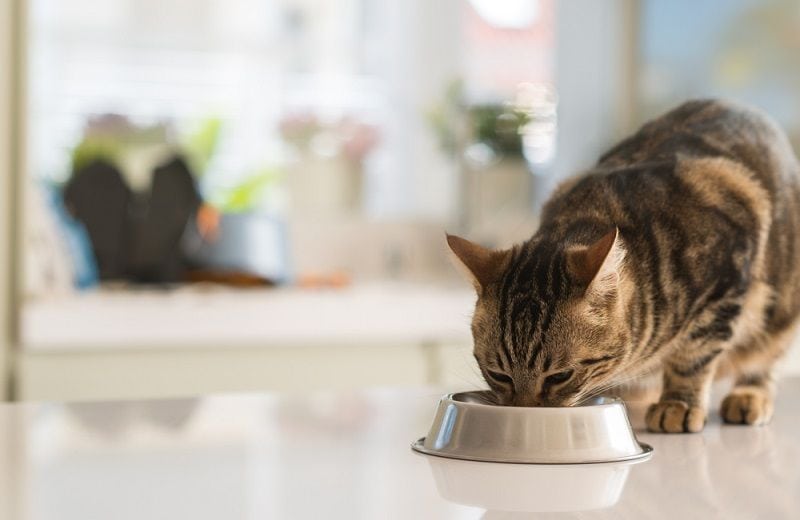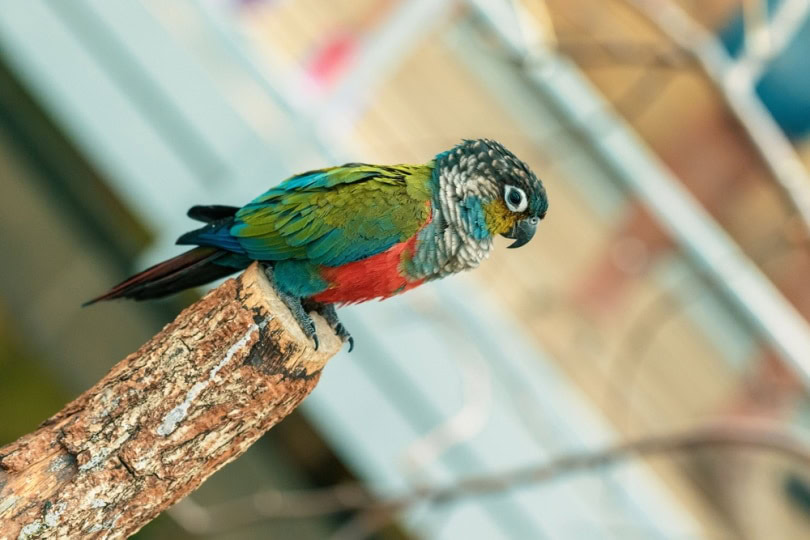VET APPROVED

The information is current and up-to-date in accordance with the latest veterinarian research.
Learn more »Things always happen when you least expect them to, and finding a stray cat in need is no different. We have all been there, running out the door with groceries, kids, and a million things to do, and right in front of us is a lost little one with all the signs that they need help.
Providing care to a struggling animal is a wonderful way to bring joy to your new friend as well as yourself. This article is useful if you have a hungry cat in front of you that needs some TLC. Maybe you run a shelter, perhaps you visited a shelter and took home a neglected kitty, you’ve found a stray kitty, or you know someone who has.
Either way, this article addresses all those hungry cats that may need your help to regain their strength. Cats have become domesticated with humans, and even though they are expert hunters, if they live in an urban area, food may be scarce, so starving cats can be a common sight.

The 5 Ways to Nurse a Starving Cat Back to Health
1. First Steps
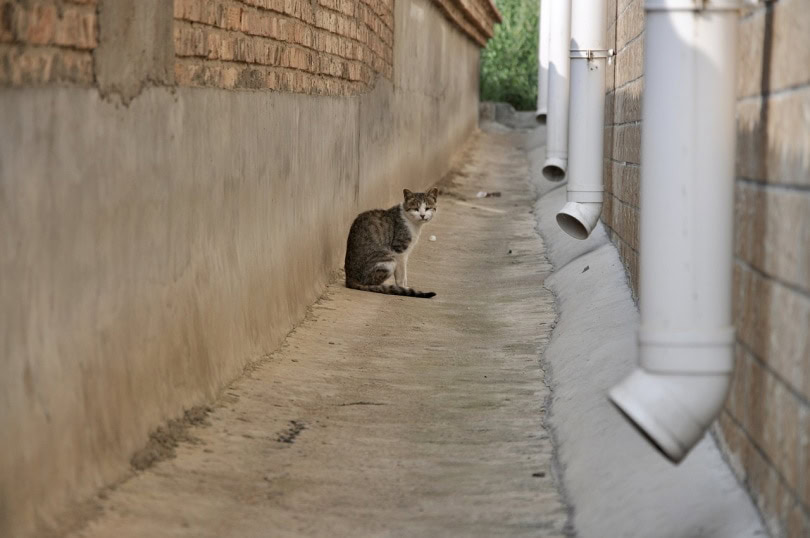
We’ll get into the details down below, but first, here are some key steps to get your kitty feeling safe right off the bat. If you’ve got a frightened stray cat in your arms and don’t know what to do, read on!
- Wherever you have found the cat, bring them to a safe place, that may be a car or a nearby building. They may try to run away out of fear, so be prepared.
- Put a blanket/jumper/towel or something similar around them as they are likely to be scared, cold, panicked, or maybe all those things combined (avoid this if you are in a hot climate). If they are injured, unable to walk, or very weak, call a vet ASAP.
- Begin soothing your new friend, either out loud or in whatever communication you feel is best, assuring them that they are safe now and that everything will be alright. This may be through soft strokes or whispers, in order to help them understand that you are not a predator. It’s a universal language to hear that you are loved, and it will go a long way to nursing them back to health.
- Get them fresh water as soon as you can. If you must, use a syringe (which may be necessary if it’s a kitten) and let them take as much or as little as they need. Water is essential and can be offered before food. However, if they refuse to drink, wet food can also provide them with hydration.
- Once they have calmed down a bit, and you’ve had a chance to assess their age, you can figure out what nourishment is best to offer them. If you see that the cat is at least a few months old, you can offer a bit of cooked chicken, turkey, or fish and make it into a broth. If that’s not available, go to the pet store and get some high-quality, high-protein wet food, preferably as natural as possible. If you have found a very small kitten, you’ll need to buy milk replacement kitten formula at the store.
- Slowly offer the lost feline small portions of food at frequent intervals. Note: Do not let them eat as much as they want, as, in severe circumstances, this can cause refeeding syndrome, described in detail below.
- By this point, you may have already gotten your phone out to call your vet, but if you have not, now is probably a good time. A checkup is required as you don’t know anything about this creature, and they may have serious medical conditions.
- Well done! You may have just saved a life.
2. Assess the Cat’s Condition
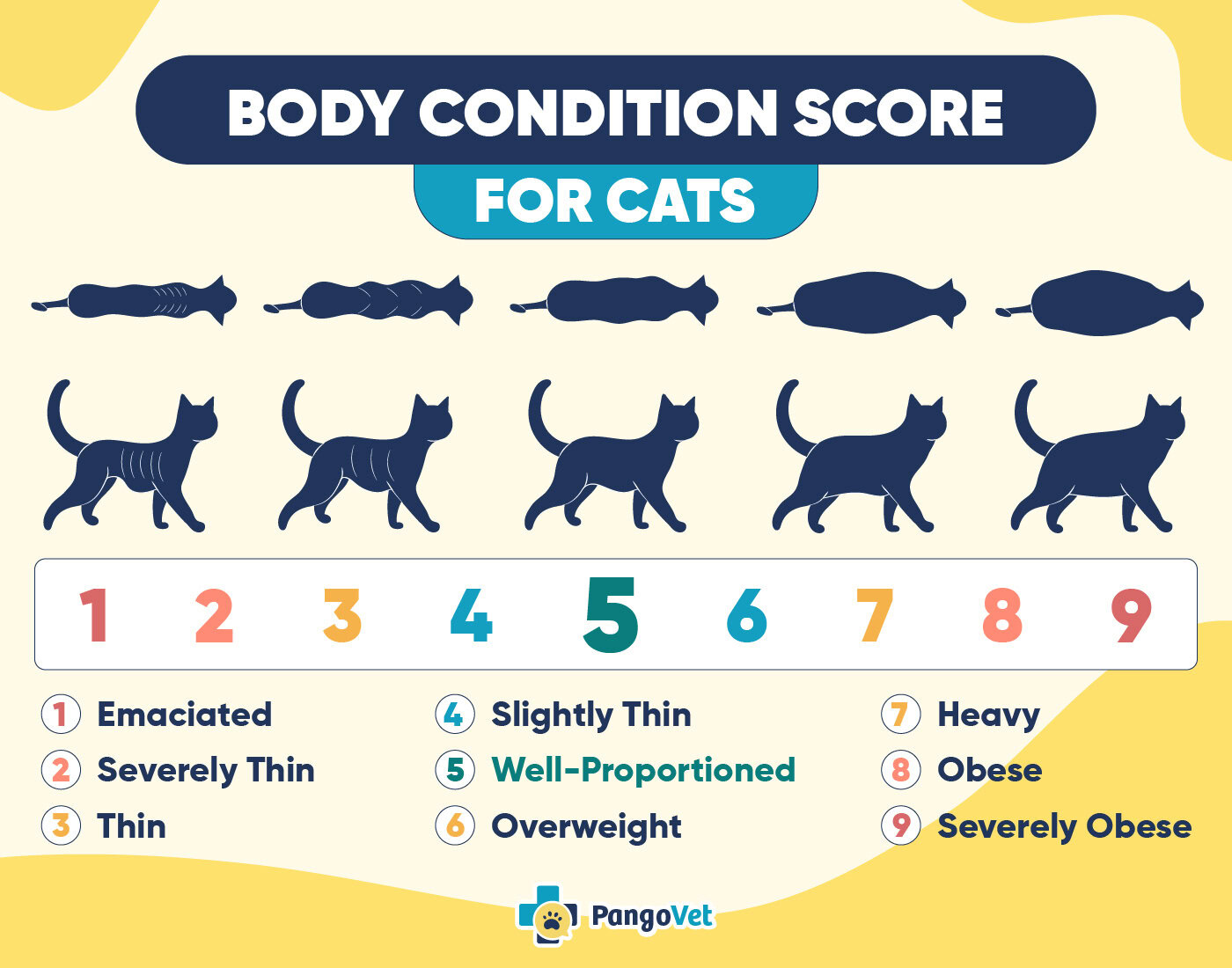
Shelter medicine is a huge field and there is constantly new research coming out about how to deal with rescue animals. There are many factors to take into consideration when treating a stray cat, so the correct treatment is highly specific. The primary diagnosis, of course, should be made by a vet. But if you are the one who found the kitty, you will have to do a rough assessment to ensure their survival.
The first question to ask is: “Is this cat malnourished or completely emaciated?” You will normally be able to figure this out just by looking at them.
Body Condition Guide for Cats is a great guide that can show you what to expect in a healthy cat and offer a better idea of how thin your cat actually is. Obviously, as stated in the emergency steps, if the kitty is completely lethargic, unable to move, and/or skin and bones, call an emergency vet as soon as you can. Any cat that is slightly better than this still probably falls into the emaciated category, which requires possibly round-the-clock care and monitoring. A malnourished cat is usually in a little better state and can start having a high-calorie intake, perhaps immediately.
Cats will know what they need, and if your kitty has a good appetite when food is presented, then hopefully their tummy isn’t too unwell from hunger. Lack of appetite indicates some underlying issues and force-feeding is absolutely not an option. IV fluids with veterinary care may be the only option until their strength is built up.
3. Rehydrate
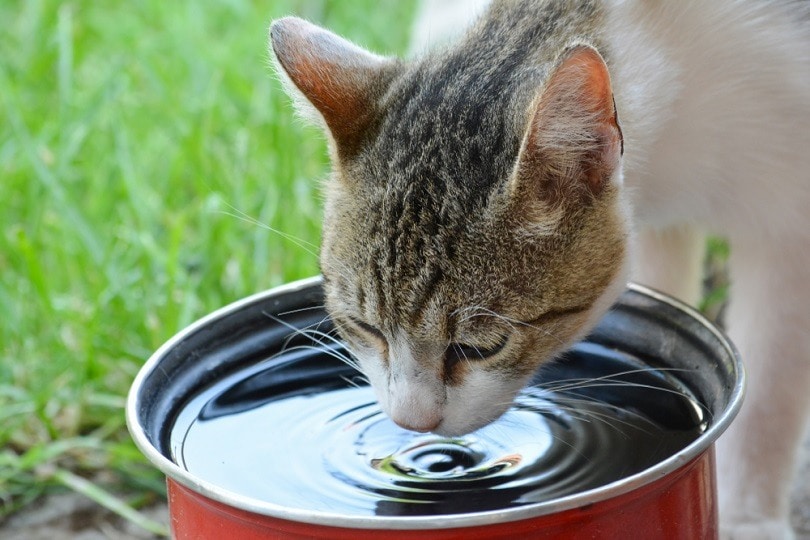
Before you give the cat any food, provide fresh, clean water. If they won’t take it, try a syringe to get the fluids into their mouth. Otherwise, it’s time to see the vet, as hydration is crucial to their survival. There are clear signs of dehydration, such as loose skin, and it can almost be assumed that if your cat is malnourished, they are dehydrated as well.
4. Nourishment
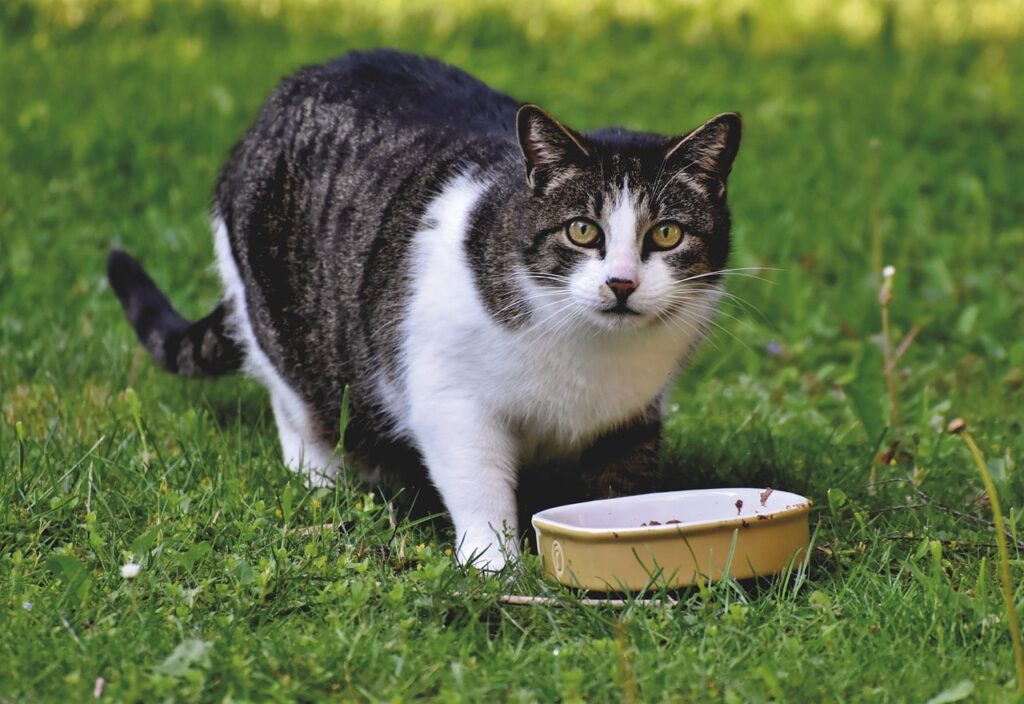
The two distinct categories of emaciated and malnourished cats require slightly different care, however, if you are slow in offering high-fat and high-protein meals with almost no carbohydrates, your new friend should improve. You may think that you should squeeze in as much food as possible into these poor creatures, but this should be avoided due to refeeding syndrome.
Refeeding syndrome is a condition where metabolic imbalances occur due to starvation. For starving, unwell cats, cooked wet food made from fish, turkey, or chicken must be their staple for at least a week. The ideal situation is to make a fish or poultry broth and serve it about 4–6 mini meals a day. Then, slowly, some canned wet food can be introduced, but only if it’s completely natural and preferably cooked with raw foods being added bit by bit.
Some canned fish, such as tuna or sardines, may be given in small doses as these are high-calorie and nutritious. Progress is cat-specific, but once you get the green light from your vet, then you can introduce some dry food.
Malnourished cats are still in danger from refeeding syndrome, so again, little by little is the protocol. Any wet food will offer nourishment to their sensitive bellies but cooked meats and broths are preferred.
5. Long-term Food Plan and Care
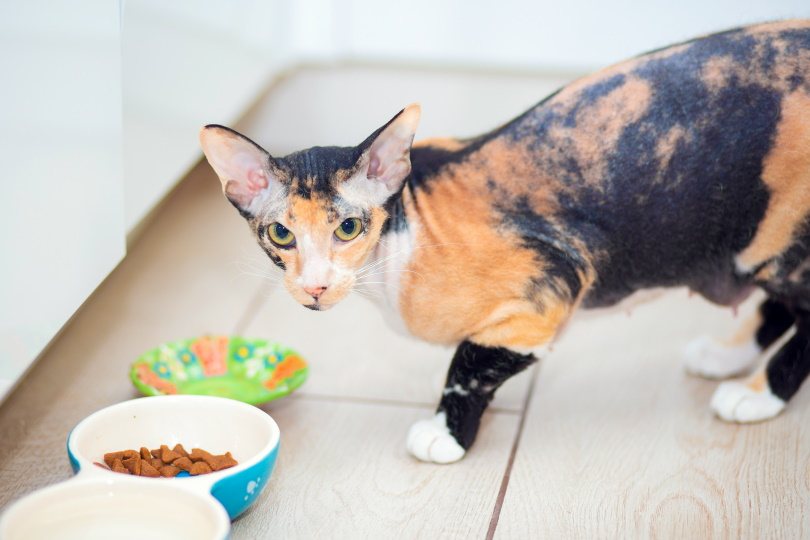
It may take your new friend quite a long time to recover from the trauma of being neglected/without proper nourishment and you will get a sense when they are coming around. Usually, when you rescue a cat, each week as they become more comfortable, new aspects of their personality appear.
This is very beautiful to witness, and the little and often feeding will support this substantially. Eventually, you can reduce the food to normal levels and stop the vitamins. When the time is right and the cat has reached an appropriate weight, be sure to wean them off of a high-calorie diet so they stay healthy.

Conclusion
Caring for a starving cat requires a lot of patience and compassion. Start by giving your cat small yet regular portions of high-protein wet food for one week to avoid the dangers of refeeding syndrome. You would need to create a nurturing environment to help the cat feel comfortable while regaining strength and trust. Consult with a veterinarian if you need guidance and advice. Each cat’s recovery period will be unique, and with consistent care and patience, they can get back to living a full and healthy life in no time.
See Also:
Featured Image Credit: Krakenimages, Shutterstock
